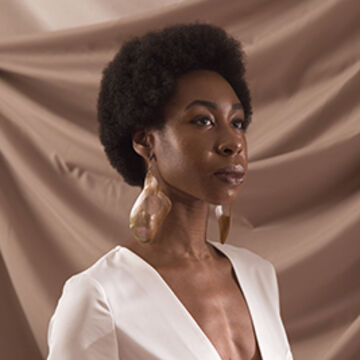

Alexandria Eregbu
Lecturer
Contact
Bio
Alexandria Eregbu is a multimedia artist, educator, curator, writer and visionary. On a fundamental level, Alexandria believes that art and expression are essential functions of community. As such, her work has been most dedicated to guiding creative experiences that empower audiences engaging the arts. Her early interests in civic engagement were initially fostered in 2014 through her involvement as Lead Teaching Artist with Teens Reimagine Art, Community, and Environment (TRACE)— a youth activism program facilitated through the Chicago Park District. Part of her contributions to the program included co-founding the Community Curatorial Project (CCP) to additionally support teen leadership and self-discovery in their native neighborhoods.
Most recently, Alexandria held a two year position as Curator for Illinois Humanities' city-wide initiative, Envisioning Justice— which examined how incarceration affects Chicago communities and interrogated the failures of our criminal justice system. Her growing concerns in justice, liberation models, and poetry are best exemplified in her writing, study of Africa and its diaspora’s contributions to cloth histories, and her involvement as co-founder of Black surrealist collective, ‘du monde noir.’
As an artist, Alexandria draws from history, personal experience, and her own imagination to deepen her connectivity to the natural world. Her practice is often driven by memories, whether lived or dreamt, and surrealist activity across the diaspora— spanning from West Africa, the Caribbean, to her native city in Chicago. Her work has been presented at Public Space One in Iowa City, Poets House in New York, the Camargo Foundation in Cassis, France, Casa Rosada in Salvador, Brazil, and Contemporary Art Center in New Orleans, among others. Her writing has been published by the University of Chicago Press, Candor Arts, Terremoto Magazine, and Green Lantern Press.
Alexandria is an Emerging Artist Fellow with the Driehaus Museum (2020); a recipient of the 3Arts Award (2016); and Newcity Breakout Artist (2015). She is also a current lecturer at the School of the Art Institute of Chicago in the Department of Fiber & Material Studies.
Personal Statement
I believe that fibers and our attachment to materials are like vessels— they hold invaluable pieces of information, like an inscribed memory… or perhaps more like DNA. My work is an obsession with those memories, whether it be embodied, lived, or dreamt. I am frequently cross-examining my understanding of the natural world through sensory-driven concerns, often with a burning and enraged desire to fully interrogate the ancestral histories and traditions that were both stolen and kept secret from me.
My artwork serves as a watery release. The materials that I work with feathers, obsidian, indigo dye, cowrie shells, dried flowers, cotton, linen, fishing nets, all charge these waters. They speak to me and share how long they’ve been traveling. Their textures tell me where they’ve been. Sometimes depending on the color, I can feel what they’re feeling, too. Though I find the conversations with these materials and their histories to be both gratifying and maddening, they help bring my artworks: sculptures, textiles, props, and installations through their beginnings and endings. More typically than not, the work is in some form of opposition with one another— bound by a sort of meeting at a crossroads. But it is they, the materials, which function as the ultimate compass. They guide me through new chapters as old chapters come to a close. While yes indeed, I am the captain of my own ship, sometimes their guidance directs me to demanding and unforeseen currents.
My most recent tide has brought me closer to the shores of West Africa, home as my father knows it. Studying his country, the artwork, garments, rituals, and performances, I have found home in the Igbo people’s use of dualism, the Leopard Man’s spiral, the body patterns of uli, love letters as chalk drawings, the blue-pigmented textiles of the Yoruba and their orishas which remind us of Nature’s ordered chaos and our intertwined connection to it. This is the Marvelous. Suddenly an entirely fantastical world awaits before me. I feel like a child lost in rhythmic dance and these sandy waters are ones my curiosity can’t resist.”